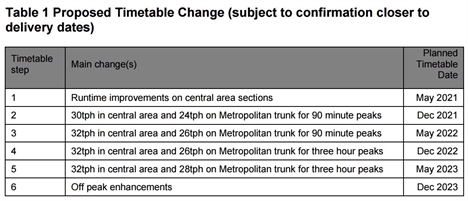03.08.15
LU and Thales finalise contract for sub-surface railway resignalling
Transport for London has finally hammered out the details of the contract to resignal London Underground’s four subsurface lines, 15 months after pre-selecting Thales to do the work.
Bombardier won the original contract in June 2011, but it and London Underground (LU) made the decision “mutually” to re-let it at the end of 2013
Thales was the obvious replacement, having been the contractor to deliver the (delayed) Jubilee Line resignalling and the (much more successful) Northern Line resignalling too, using its SelTrac CBTC (communications-based train control) system. It was the only company to submit a tender.
The £760m contract with Thales is just one element of the £5.41bn modernisation programme for the modernisation of the Circle, District, Metropolitan and Hammersmith & City lines, which also includes the new fleet of 191 S Stock trains and other improvements that have already been delivered. That overall estimate of £5.41bn is a reduction of £131m on the last forecast, announced in March, though still higher than the original £4.26bn.
RTM reported in June that some of the timetable changes associated with the resignalling of the SSR lines will not happen until the end of 2023, even later than originally thought (though the main benefits will be felt by 2022).

When the Bombardier contract was originally scrapped, there was still an insistence that the old 2018 deadline was feasible – though few industry commentators thought this likely.
TfL board papers recently called SSR resignalling “London Underground’s top priority” and says it will “provide a crucial contribution to the increased capacity of London’s transport network”. The current signalling system “belongs in a museum”, it said.
TfL says the contract will create or sustain 1,100 jobs and 60 apprenticeships, boost capacity by an average of a third across the four lines, and cut journey times.
Nick Brown, managing director of London Underground, said: “Having successfully modernised three of the most heavily used lines on our network, we are ready to begin work to bring the next four lines into the modern era. This will transform the journeys of millions of our customers, significantly increasing service reliability and frequency.
“We have a very clear delivery plan and timetable for the work and, as we have done with the modernisation of the Northern line, we will keep London moving and growing as we do it. In parallel, we will continue to deliver a better, more reliable service every day which builds on the work over recent years to reduce delays to their lowest ever level.”
Patrice Caine, Chairman and Chief Executive Officer of Thales said: “We are delighted to have been selected by Transport for London and to continue to bring our global expertise in the field of transportation systems to the London Underground. Our technology is in operation on over 80 metro lines in 40 of the world’s largest cities, including New York, Dubai, Shanghai and Hong Kong.
“If the Jubilee and Northern lines’ success is any indicator, future travellers on the Circle, District, Metropolitan and Hammersmith & City lines will experience; faster journeys, reduced over-crowding and increased service reliability. Once completed, 60% of the London Underground will have been modernised using Thales signalling technology.”
RTM recently interviewed the key players in the Jubilee and Northern Line resignalling (JNUP), including London Underground head of automatic train control Andy Bourne; LU’s then programme director of capacity upgrades, Stuart Harvey; Thales programme director Andy Bell; and Thales chief engineer for the upgrade, Andrew Hunter.
They said there are obvious benefits to having a close relationship, with a shared history between Thales and TfL (before JNUP, there was the implementation of SelTrac on the Docklands Light Railway in the mid-1990s, and the Connect radio communications contract, a 20-year PFI that runs until 2019, for example). But they acknowledged the dangers in becoming too reliant on one supplier. Bourne said: “We’re governed by EU procurement rules, so we can’t just award contracts to one supplier, however much we like them. Thales has a good product, but it doesn’t mean it will necessarily always be the best product around. We are committed to continuing to look to the market to come up with innovative solutions.
“Having said that, we recognise that we are in a situation where Thales is a very important supplier. That means we have to deal with them on a much more strategic level.”
That included, he said, bringing all the Thales-facing contracts and workstreams within LU together in one place, to find economies of scale and ensure strategic co-ordination.
Bell said: “It’s particularly pleasing that our good delivery track record and the relationship we’ve built up with LU on Northern Line has hopefully stood us in good stead for future contracts – SSR and so on. We plan to take the team that has successfully delivered Northern and move them across to SSR.”
Work is expected to begin later this year, and once completed, there will be trains every two minutes across much of this part of the network in central London.
This article explains in more detail the recent changes to the scope of the resignalling project.